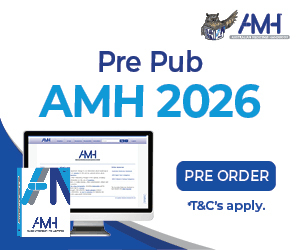Ensuring equitable access to healthcare means that every Australian, irrespective of their socio-economic status, geographical location, or other factors, has the capacity to access essential health services when and where they need them.
The Australian Nursing and Midwifery Federation (ANMF) is actively involved in a range of strategically aligned initiatives to achieve this goal, such as reviews, taskforces, and advisory groups.
Last year, ANMF Federal Secretary Annie Butler was appointed to the Strengthening Medicare Implementation Oversight Committee, established to guide comprehensive reform measures shaped by the Strengthening Medicare Taskforce Report and set against the Primary Health Care 10 Year Plan. In the 2023-24 Budget, the Albanese Government allocated $6.1 billion to strengthen Medicare. This included $3.5 billion to triple bulk billing incentives, facilitating free GP consultations for children under 16, pensioners, and concession card holders, and $445 million for the Workforce Incentive Program to increase payments to support multidisciplinary care. Expanding the nursing workforce to improve access to primary care, including improving patient care through MBS nurse practitioner services and the removal of legislated collaborative arrangements, was another key action.
“The Government has committed to harnessing the full potential of nurses, nurse practitioners and midwives, which will enable them to maximise their training, education and skills in delivering the essential care required by people,” said ANMF Federal Secretary Annie Butler
Other integral components of strengthening Medicare reforms include the establishment of the MyMedicare voluntary patient registration payment model. This innovative approach paves the way for blended funding models that tailor healthcare services to better meet patient needs. Under this model, patients can register with their preferred practice, GP, and care team, ensuring more coordinated, continuous healthcare, and easier access to specialists for managing chronic and complex health conditions.
“A stronger Medicare system that provides all Australians with timely access to preventative care, early intervention, and effective chronic disease management, has the potential to significantly reduce the burden of disease, prevent complications, and improve overall health outcomes,” Ms Butler said.
The government’s Scope of Practice Review, another key recommendation from the Strengthening Medicare Taskforce Report, similarly seeks to identify and eliminate barriers preventing health professionals from working to their full scope of practice in primary care.
In its submission to the review, the ANMF outlined key enablers government, employers and regulators must address to enable health practitioners to work to their full scope. These include:
- Funding reform – Moving away from subsidised fee-for-service models that have resulted in the privatisation of primary healthcare and towards block and blended funding and employment models which support nurse-led care, such as the ACT Walk-in Clinics.
- Midwifery Group Practice (MGP) and midwifery-led continuity models of care, which improve health outcomes for women and babies, should be expanded.
- Increasing primary healthcare theory, simulation and workplace learning in pre-registration nursing and midwifery education programs.
- A cultural system change to ensure ENs are more effectively utilised, including initiatives to educate healthcare staff and employers on the scope of practice of ENs.
- Funding for increased numbers of nurse practitioner positions in primary care, including aged care, which would greatly reduce ED admissions, ambulance costs and hospitalisations.
- Remove funding barriers for NPs so they can work to their full scope of practice.
According to the ANMF, the greatest risk to primary healthcare and community access lies in the potential that everything remains the same, and profit-based models, controlled by medical practitioners and other private providers, become the accepted norm.
“Such models will result in increased government spending to support private business models with increased out-of-pocket costs for people seeking healthcare,” the ANMF argued.








